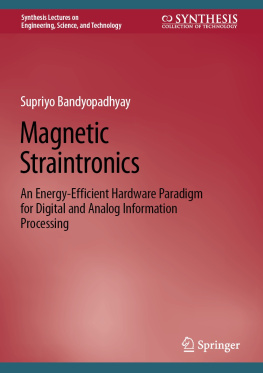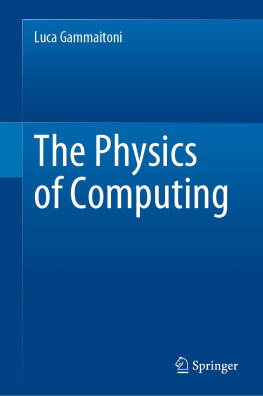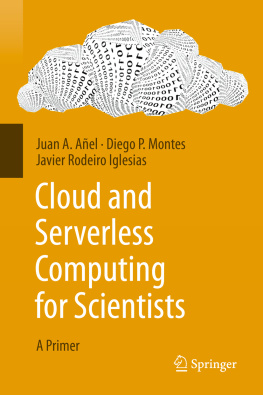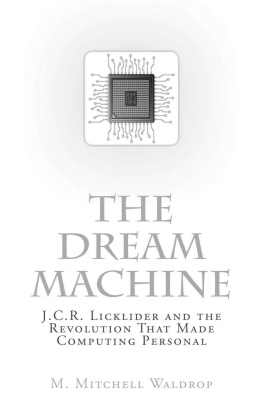James M. Nyce
Brown University Providence, Rhode Island
Paul Kahn
Brown University Providence, Rhode Island




vii
ix
Part 1: The Creation of Memex
Larry Owens
Janes M. Nyce and Paul Kahn
Vannevar Bush
Vannevar Bush
Vannevar Bush
Part 2: The Extension of Memex
Paul Kahn and James M. Nyce
Colin Burke
Vannevar Bush
Vannevar Bush
Vannevar Bush
Vannevar Bush
Part 3: The Legacy of Memex
Douglas C. Engelbart
Theodor H. Nelson
Linda C. Smith
Norman Meyrowitz
Tim Oren
Gregory Crane
Randall H. Trigg
Colin Burke, Department of History, University of Maryland, Baltimore County, 5401 Wilkins Ave., Baltimore, MD 21228
Gregory Crane, Department of the Classics, Harvard University, Boylston Hall, Cambridge MA 02138
Douglas C. Engelbart, Bootstrap Project, Stanford University, Sweet Hall, Stanford CA 94305
Paul Kahn, Institute for Research in Information and Scholarship, Brown University, Box 1946, Providence RI 02912
Norman Meyrowitz, GO Corporation, 950 Tower Lane, Foster City, CA 94404
Theodor H. Nelson, Autodesk, 2320 Marinship Way, Sausalito CA 94965
James M. Nyce, Department of Anthropology, Brown University, Box 1921, Providence RI 02912
Tim Oren, Advance Technology Group, Apple Computer, 20525 Mariani Ave, MS 76-2C, Cupertino CA 95014
Larry Owens, Department of History, University of Massachusetts at Amherst, Amherst, MA 01003
Linda C. Smith, Graduate School of Library Science, University of Illinois, 1407 West Gregory Dr., Urbana IL 61801
Randall H. Trigg, Institute for Information, Aarhus Universitet, Niels Juelsgade 84, DK 8200, Aarhus N Denmark
This book focuses on one early and important figure in the history of computing-Vannevar Bush. Bush's contributions to engineering, higher education and science are well known. Bush was also one of the first Americans to design and use computing machines to solve mathematical and engineering problems. This book looks at these machines and particularly at Memex, a machine that was never built. While Memex was a visionary design, the documents and papers brought together here show how much Memex reflected the intellectual currents and the technology of the time. At the same time in writing about Memex, Bush argued that computing machines and machine intelligence would come to have an important place in man's intellectual life.
Much of the story about Memex concerns analogy computers. While Bush and his contemporaries thought analog machines had great promise, today this technology has been for the most part ignored or forgotten. We hope that through this book readers will gain a better understanding of the place analog machines have in the history of modern computing. In particular, we hope they will learn, as we have, something of the transitions and disjunctions that have characterized this history.
The seed for this book was planted at the 1987 Hypertext conference at Chapel Hill. The influence of Bush's essay "As We May Think" on the emerging field of hypertext was widely acknowledged. The year before, Bush had been discovered by the personal computing world at the first Microsoft CD ROM conference. However, we were struck by a discontinuity. People interested in hypertext, electronic libraries, and information retrieval, the very audience influenced by Memex, knew little or nothing about Bush as an engineer and pioneer of computing machines. People who knew Bush as an engineer and statesman had written little about Memex. We set out to determine what was known about Bush's Memex, to better understand the context from which it emerged, the ideas it represented, and to evaluate the impact it has had on the computer and information sciences.
The essays in Part One take us back to when the greatest technological innovations in machine calculation were occurring in the field of analog computing. In the first part of the book, The Creation of Memex, Larry Owens provides a history of several of Bush's analog computers-machines that set the stage for Memex. Our own essay describes Bush's speculative writings up through the publication of "As We May Think" in 1945 and tells the story of how this essay made its way into print. The balance of Part One is three essays by Bush, ending with a text of "As We May Think" that shows the variations between the versions published in The Atlantic and LIFE Magazine.
Bush's interest in Memex did not end with the publication of "As We May Think." The essays in Part Two show how Memex fared as digital machines and theory became the dominant technology. In Part Two, The Extension of Memex, our piece describes the essays Bush wrote in which he extended the Memex design and addressed questions of machine intelligence. Colin Burke sketches out the history of the Rapid Selector, a little-known machine whose technology helped inform the Memex design. "Memex II," in which Bush revisits the ideas and issues of the first Memex design, is published here for the first time. The remaining three essays, Bush's last published work about Memex, are taken from his collection of essays, Science Is Not Enough, and his autobiography, Pieces of the Action.
Part Three looks at the influence Bush's ideas have had on modern digital computing, particularly in the area of hypertext. We begin the third part of the book, The Legacy of Memex, by reprinting pieces by two pioneers in the field, Doug Engelbart and Ted Nelson. In their papers, Engelbart and Nelson discuss the continuity they recognized between their current work and Bush's ideas. Over a decade ago, Linda Smith examined through citation analysis the influence Bush's "As We May Think" has had-here she updates her research and findings. For many readers, Bush's essay "As We May Think" and his description of Memex there prefigures current research in several areas of computer and information science. The rest of Part Three traces out the relationship that exists between Memex and today's research in workstations, hypertext, and information retrieval. Norm Meyrowitz, the chief architect of Intermedia, uses Bush's ideas as a benchmark to assess today's technology and development efforts. Tim Oren of Apple surveys the current state of the art in information retrieval research and looks at how today's ideas relate to what Bush proposed. Randy Trigg, who helped develop NoteCards at Xerox, compares the idea of trails in Memex with guided tours and directed paths in current hypertext systems. Greg Crane, of Harvard's Perseus Project, looks at the research library, its history and importance, and relates this to today's projects in hypertext and information retrieval.












